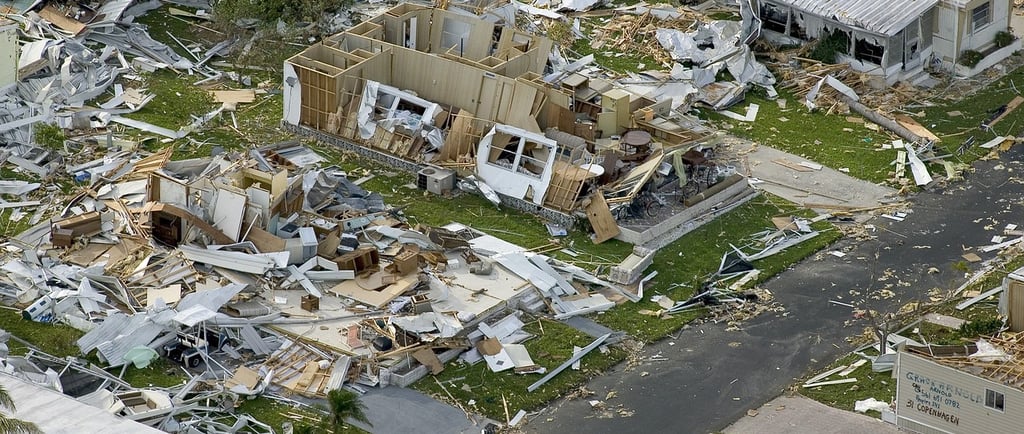A New Era of Disaster Preparedness: What the Latest Executive Order Means for Health Response Alliance and Our Mission
On March 19, 2025, President Trump signed an executive order titled "Achieving Efficiency Through State and Local Preparedness," signaling a significant shift in the federal approach to disaster preparedness and resilience. The order prioritizes state, local, and individual responsibility in disaster readiness, with the federal government playing a more supportive role. While this framework aims to improve efficiency and tailor preparedness efforts to local needs, it raises critical questions about capacity gaps, resource allocation, and the ability of vulnerable communities to withstand crises. At Health Response Alliance (HRA), we recognize the importance of strengthening localized disaster response systems, but we also understand the challenges that come with decentralizing emergency preparedness - particularly when it comes to ensuring equitable access to healthcare and essential medical resources during crises.
3/20/20252 min read


Key Takeaways from the Executive Order
1. State and Local Governments Will Take the Lead
The executive order emphasizes that preparedness begins at the community level. The federal government will step back from direct involvement and instead focus on providing support when needed. While this could lead to more tailored, region-specific disaster planning, it also risks widening gaps in preparedness, especially for communities with fewer resources.
2. A National Resilience Strategy is on the Horizon
Within 90 days, the administration will release a National Resilience Strategy designed to guide preparedness efforts. The strategy is expected to focus on risk-based decision-making, improving infrastructure, and protecting critical systems from disasters - including cyberattacks, wildfires, hurricanes, and space weather events.
For HRA, this means a potential shift in how we collaborate with federal agencies and how NGOs and healthcare partners are integrated into national planning efforts. We will advocate for strong public-private partnerships to ensure that communities - especially those historically marginalized - do not get left behind in disaster preparedness efforts.
3. A New National Risk Register Will Be Developed
Within 240 days, the administration will create a National Risk Register - a tool designed to identify and quantify risks to national infrastructure and healthcare systems. If implemented effectively, this register could improve data-driven decision-making and allow for more proactive, rather than reactive, responses to emergencies.
At HRA, we see an opportunity here to push for transparency in how risks are assessed and categorized. The healthcare sector must be included in this assessment - not just in terms of hospital infrastructure but also in ensuring supply chain resilience, medication access, and equitable emergency healthcare delivery.
4. Federal Disaster Response Frameworks Will Be Simplified
The order calls for the streamlining of federal disaster preparedness programs, aiming to reduce bureaucratic barriers and improve coordination with state and local governments. While efficiency is always a goal worth pursuing, there is a risk that oversimplification could lead to confusion about roles and responsibilities, particularly for NGOs and healthcare organizations that rely on federal coordination for emergency medical response.
As HRA continues to work with partners across the healthcare, emergency management, and nonprofit sectors, we will advocate for clear communication, defined roles, and ongoing collaboration to ensure that health-focused disaster response efforts remain well-supported.
What This Means for Health Response Alliance and Our Partners
This executive order underscores the urgent need for organizations like HRA to step up and fill the gaps that may emerge as federal roles shift. We must ensure that:
Healthcare access remains central to disaster preparedness planning.
Supply chain resilience is prioritized, preventing shortages of critical medicines and medical supplies in emergencies.
Vulnerable communities are not left behind in a decentralized preparedness model.
NGOs and healthcare providers are integrated into the new resilience strategy and risk register development.
Looking Ahead
While decentralization may improve efficiency in some areas, it also places a significant burden on local and state entities - many of which are already underfunded and understaffed. HRA will continue to advocate for equitable preparedness solutions, work closely with our partners, and push for stronger collaboration between government agencies, NGOs, and the private sector.
We will be closely monitoring the National Resilience Strategy, the National Risk Register, and changes to federal disaster frameworks to ensure that healthcare remains a priority in emergency preparedness planning.
As these policies take shape, HRA will be a strong voice for health equity in disaster response. We invite our partners, policymakers, and emergency managers to join us in ensuring that preparedness is not just efficient, but also inclusive, sustainable, and effective for all communities.
Health Response Alliance is a nonpartisan 501c3 tax-exempt organization.
All contributions are tax deductible to the extent provided by law.
Federal Identification Number (EIN): 33-2575005
© 2025 Health Response Alliance Inc. ALL RIGHTS RESERVED.
